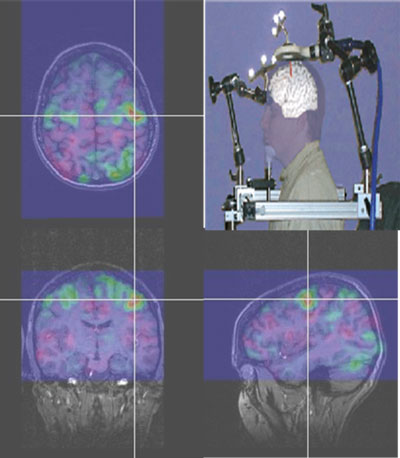UC Berkeley Press Release
Using TMS to enhance peripheral vision
Via Medgadget
 |
Christian Ruff, Jon Driver and colleagues at University College London have succesfully used transcranial magnetic stimulation (TMS) to sharpen peripheral visual perception . Results of their experiment were published in the August 8th issue of Current Biology ( full text .pdf of the article is available on the Current Biology site)
From the Press Release :
In their new work, the researchers used trans-cranial magnetic stimulation (TMS) to trigger a chain of activity in specific parts of the brain, while the activity was measured with a scanner. In this way, they were able to show that stimulating a particular region of the frontal cortex that is normally involved in generating eye movements can change activity in visual cortex, almost as though an eye movement had been made (even though the eye itself stayed still).
Perceptual tests confirmed that this brain stimulation had the effect of enhancing peripheral vision, as if people could now see better out of the corner of their eye.
Brain stimulation with TMS is beginning to be used in the treatment of various neurological conditions, including those, such as the after-effects of a stroke, that can impair vision. The technical breakthrough reported by the UCL group means that it is now possible to study the underlying brain activity triggered by TMS, both in the healthy brain and in patients with brain damage.
